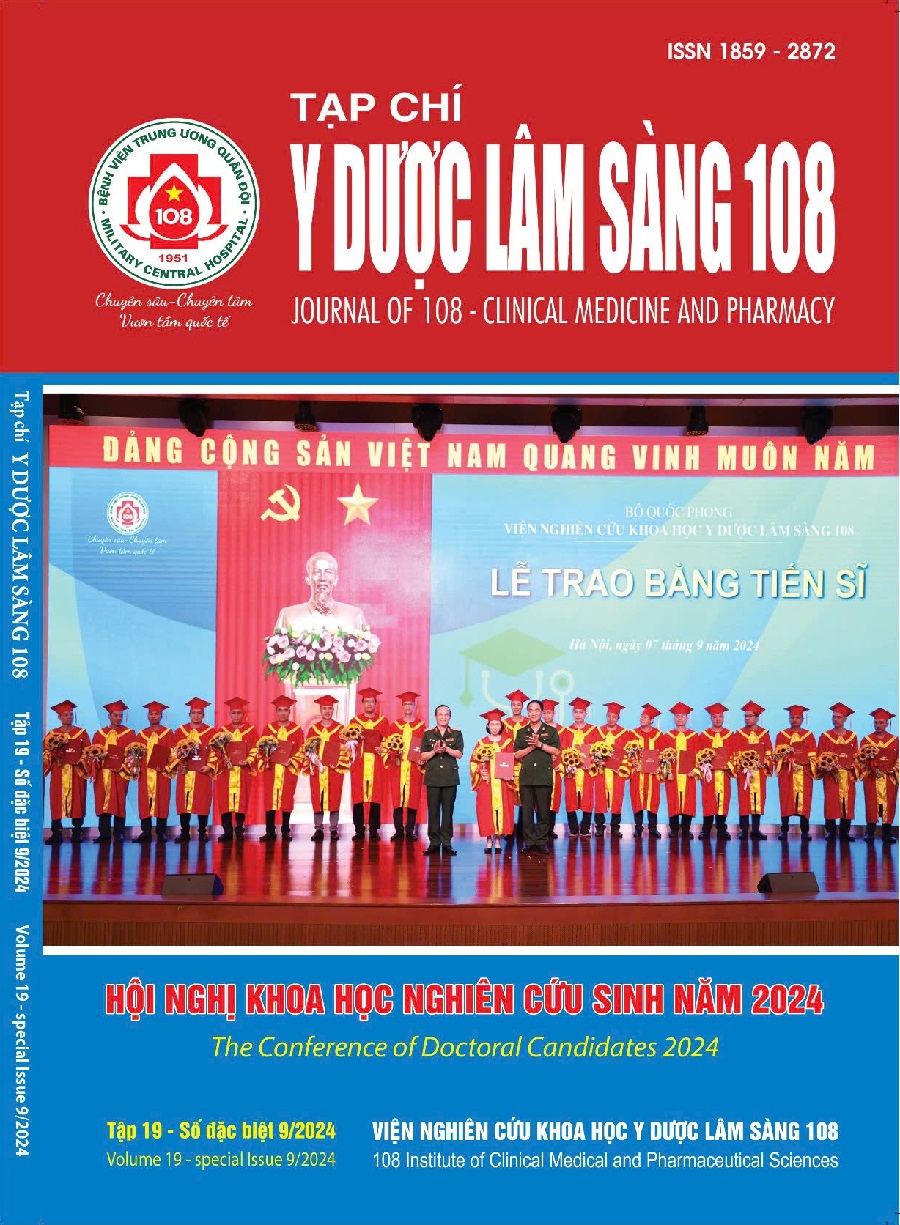Evaluation of the results mini percutaneous nephrolithotomy based on the GUY’s stone score
Main Article Content
Keywords
Abstract
Objective: To evaluate the results of treatment of renal calculi by mini percutaneous nephrolithotomy based on the characteristics of renal calculi and morphological pelvicalyceal system classified by the GUY’s stone score (GSS). Subject and method: A prospective observative study of 470 patients, who underwent mPCNL at the 108 Military Central Hospital between August 2003 and January 2023 were included in the study. All patients were studied with a computer tomography scan for characteristics of renal calculi and morphological pelvicalyceal system based on GSS. Determine the free-stone rate according to the GSS. The complications were graded using the modified Clavien-Dindo score. Result: The mean age of patients was 54.2 ± 10.9 (32-83); 330 (70.2%) patients were male, and 140 (29.8%) patients were female. The average stone size was 21.3 ± 11mm. Grade of the GSS with level I, level II, level III, and level IV were 175 (37.2%) patients, 210 (44.7%) patients, 55 (11.7%) patients, and 30 (6.4%) patients respectively. The overall stone-free rate was 91.7% (431/470). The stone-free rate in grade I was 167/175 (95.4%), grade II was 201/210 (95.7%), grade III was 46/55 (83.6%), grade III was 46/55 (83.6%), and grade IV was 17/30 (56.6%). According to the modified Clavien-Dindo classification, grade I, II, IIIa, IIIb, and IV complications were observed in 43 (9.1%), 14 (2.9%), 4 (1%), 1 (0.2%), and 1 (0.2%) patients, respectively. The serious complication was 1 (0.2%) patient with post-operative sepsis. Severe complications (grades IIIa, IIIb and IV according to Clavien-Dindo) start appearing and increase in frequency as the GUY score increases. At grade II (GSS) there was 1 (3.7%) patient with complication grade IIIa; At grade III (GSS) there were 2 (14.3%) patients with complication grades IIIa; and at grade IV (GSS) there was 1 (14.3%) patient with each complication grade IIIa, IIIb and IV (p<0.05). Conclusion: The morphological characteristics of renal calculi and pelvicalyceal systems that the GSS classifies can help surgeons predict stone-free results and the risk of complications when treating renal calculi with mPCNL.
Article Details
References
2. Singh AK, Shukla PK, Khan SW, Rathee VS, Dwivedi US, Trivedi S (2017) Using the modified clavien grading system to classify complications of percutaneous nephrolithotomy. Curr Urol 11: 79-84.
3. Đỗ Trường Thành, Đỗ Ngọc Sơn, Nguyễn Huy Hoàng và cộng sự (2019) Đánh giá hiệu quản phương pháp tán sỏi thận qua da đường hầm nhỏ dưới hướng dẫn của siêu âm, bệnh nhân với tư thế nằm nghiêng tại Bệnh viện Hữu Nghị Việt Đức. Tạp chí Y học Việt Nam, tập 481 số đặc biệt, tr. 300-206.
4. Kumar U, Tomar V, Yadav SS, Priyadarshi S, Vyas N, Agarwal N, Dayal R (2018) STONE score versus Guy's Stone Score - prospective comparative evaluation for success rate and complications in percutaneous nephrolithotomy. Urol Ann 10(1): 76-81.
5. Bansal SS, Pawar PW, Sawant AS et al (2017) Predictive factors for fever and sepsis following percutaneous nephrolithotomy: A review of 580 patients. Urology annals 9(3): 230-233.
6. Flannigan R, Choy WH, Chew B et al (2014) Renal struvite stones- pathogenesis, microbiology, and management strategies. Nature Reviews Urology 11(6): 333-338.
 ISSN: 1859 - 2872
ISSN: 1859 - 2872
